

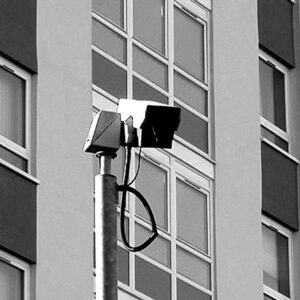
making the movie: lost in space
To make a feature-length film in six weeks is a challenge, regardless of budget. To make this feature-length film in six weeks is a miracle. Whether it will make sense to an audience is another matter. Initially I felt it was a risk to present the narrative in a linear form as opposed to the random storytelling of the original website but after reviewing the cut the other night I was pleasantly surprised at how well it sustains its 92-ish minute duration and how Kate and Gary’s narration transports the viewer to something akin to a fairytale. On that score it fulfills my intention – to create a kind of dreamscape of my native city.
I’m almost at the end of the edit. Now the picture’s sort-of locked, the sound mix begins. This consists of laying and mixing my original 845 tracks – fusing natural ambiences and wildtracks – weather, water, the movement of vegetation, traffic, etc., together with home-knitted foley and with what little ‘music’ I made for the website. There are also 66 narrated texts, composites made of the actor’s voiceovers, cut for performance and length. Most film soundtracks go unnoticed – and the same applies here. My job is to ensure the narration is comfortably embedded with the existing tracks and that each segment blends seamlessly into the next.
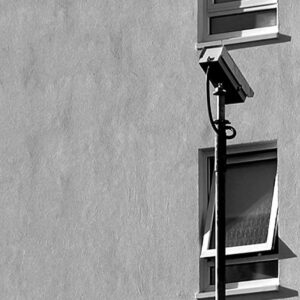
I’m still filling holes in the pictures though – improving not so great shots with more relevant ones. The last of my pickups means a return trip to Castlemilk because I feel the existing shots fail to illustrate Kate’s reading of the text. However in the spirit of the dérive and to avoid being too literal, in most cases I’ve built in enough slack between the image and the accompanying words to allow the viewer space to reflect. But on this occasion, prompted by Mary’s comments about CCTV cameras, the lack of illustration had be corrected.
Listening to Kate Dickie’s earnest and often moving voiceover, it occurs to me that as the main protagonist in Andrea Arnold’s prosaically haunting Red Road, her job as a CCTV operative meant spying on the empty streets of Glasgow’s north-east, occasionally witnessing some illicit interaction. Suddenly I’m struck by the thought – isn’t that what screening The Devil’s Plantation amounts to? People gathered in a darkened room watching the empty streets of Glasgow and its environs, perhaps in a state of suspended dread over what is about to happen? No, I conclude, because if I’ve learned anything about filmmaking it’s that the audience hopes, through the craft of image and sound, to be somehow transported. Even better if the planets align and the film’s components conjure emotional, psychological, spiritual, aesthetic resonances that chime with those hopes.
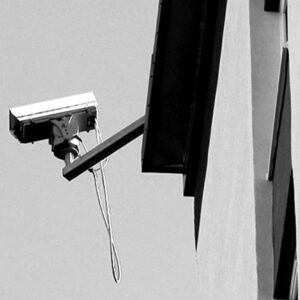
It’s Wednesday and I’m glad to be out in the sun. I set up my camera on Dougrie Place to find the best shots of CCTV cameras and soon realise I’m spoilt for choice – they are everywhere. From the GHA office to the trio of flats that once housed my formidable Auntie Mary who, according to her husband, was ‘thrown out of the SS for cruelty’ and who raised five kids in a three apartment on the 15th floor, with a chip-pan fire for drama. So it’s good to know the same grim humour prevails when I meet a elderly man, stooped and wheezing as he climbs the slope towards the flats, sees my tripod and, mistaking me for a civil engineer asks, are you here to flatten this hill?
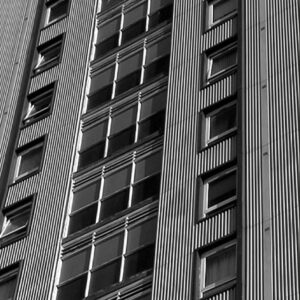
Maybe it’s the sunshine that cheers the folks of Castlemilk today, who knows, but everyone seems to be smiling. I take my shots and haul my kit over to Castlemilk Drive to get the final shots I need of the Lost Lives Memorial Garden – another omission from the original chapter of the website and a place mentioned by Mary Ross when she went to trace her parent’s last known address at nearby Ardencraig Road, which by coincidence was where my maternal grandparents lived during the 1960s.
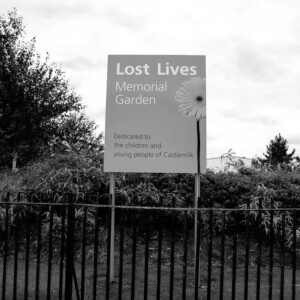
I enter the Lost Lives garden – a small plot occupying the corner of Dougrie Road and Castlemilk Drive and based on an oriental theme, with wooden pergolas and benches and copious bamboo planting. It’s not as unkempt as say, the Rose Garden in the Gorbals but I’m struck by the sight of a lone white trainer and wonder how it came to be there. I allow myself a moment to remember my late brother, who staged his first photography exhibition in Castlemilk during the 90s.
No doubt the garden was created with the best of intentions, offering solace to the bereaved and heartbroken. Today however, the placing of tributes is discouraged, for reasons undisclosed. Still I’m intrigued at how these lives came to be lost – was it drugs, violence, suicide, which of course is the lazy assumption? Or was it illness or accident? In any case, no amount of CCTV cameras would have prevented their deaths, and so they remain – a constant reminder to the living of Castlemilk that they’re deemed more likely to commit crime than say, those living in nearby King’s Park or Carmunnock.
It made sense to me, I think, strongly on a subconcious level being a ‘native’ of the area. It was moving and incredibly interesting. Thanks for making it May.
Thanks Jaine – lovely to see you yesterday and I’m so glad you connected with the film. We should definitely meet up soon!
All the best,
May